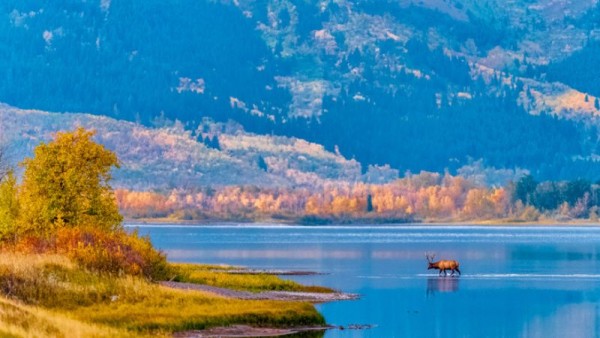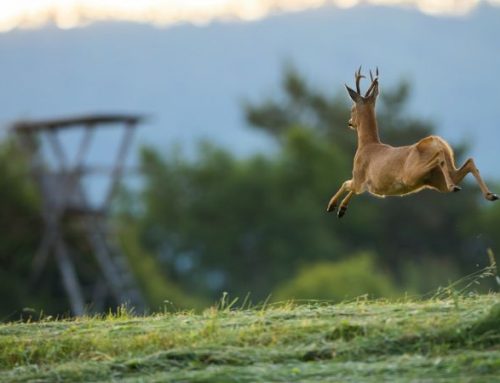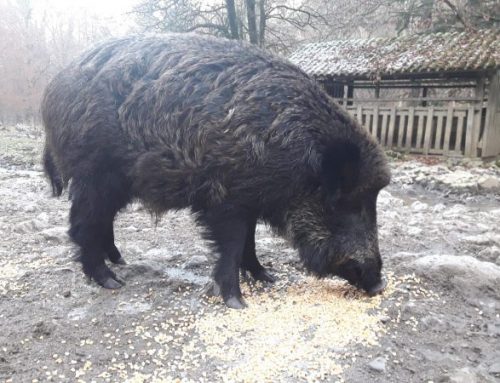There is one animal that more than any other embodies the wild soul of North America—a silent shadow moving through golden aspen forests, a bugle that shatters the dawn among the Rocky Mountains.
The Wapiti, or American elk, is not just the largest subspecies of deer on the continent; it is an icon. For centuries, it has been a companion, a resource, and a spiritual guide for Native peoples, a prized quarry for pioneers, and even today, a symbol of the great North American hunt.
To tell the story of Wapiti hunting is to tell a tale as old as humanity in America—one of respect, necessity, and, today, a deep hunting ethic.
The Wapiti and Native Americans: A Sacred Bond
For the Native tribes of the Great Plains and the Rocky Mountains, the Wapiti was more than just prey. It was a sacred creature, an embodiment of strength, fertility, and connection to the spirit world.
The term “Wapiti” comes from the Cree language and means “white rump,” referring to the distinctive light-colored patch on the rear of this large deer. Its impressive size—males can exceed 450 kg (990 lbs)—and the majesty of its antlers made the Wapiti a highly prestigious animal among Native tribes.
The Tribes That Revered and Hunted the Wapiti
-
Cheyenne
-
Crow
-
Blackfeet
-
Shoshone
-
Sioux Lakota
-
Flathead
-
Nez Perce
These tribes considered the Wapiti one of the noblest game animals, relying on its meat, hide, and even bones for their annual subsistence. The bones were crafted into tools and weapons, ensuring that every part of the animal was utilized.
Hunting was often conducted on horseback after the Spanish introduced horses to North America. However, Native hunters also employed sophisticated tracking and ambush techniques, using natural corridors between mountains or riverbanks to outmaneuver their prey.
The Wapiti as a Spiritual Symbol
In ceremonies and shamanic visions, the Wapiti symbolized a deep connection to nature and masculine vitality. It was believed that wearing Wapiti antlers or hides granted strength and endurance, making them highly revered in tribal rituals and warrior traditions.
Wapiti Hunting in American History
With the arrival of European settlers, Wapiti hunting underwent a drastic transformation. What was once subsistence hunting evolved into commercial and sport hunting, which at times threatened to decimate the population.
The Great Hunt of the 19th Century
During the 19th century, explorers, soldiers, and professional hunters pursued massive Wapiti herds across the valleys of Montana, Wyoming, and Colorado. Hunting caravans roamed for weeks in search of the largest bulls, often guided by Native trackers.
The Wapiti quickly became a coveted trophy among Europeans and Old World hunters, who were mesmerized by the vast American wilderness and the impressive size of these animals.
Decline and Revival
Unregulated hunting and habitat loss pushed Wapiti populations to the brink of extinction by the late 1800s. However, thanks to the early conservation movements—and the establishment of national parks like Yellowstone—the species was saved and has since rebounded, ensuring its presence in North America today.
The Wapiti is now considered one of the greatest success stories in American wildlife management, with healthy populations and a sustainable hunting model that ensures its preservation.
Modern Wapiti Hunting: A Rite of Passage
Hunting a Wapiti today means experiencing one of the most authentic and challenging pursuits in North American hunting.
Modern hunters must navigate:
-
Vast landscapes: the Rocky Mountains, Montana, Idaho, Colorado, and Wyoming
-
Demanding high-altitude hikes, often lasting days, carrying heavy packs and camping in the wilderness
-
The challenge of the rut, when in September and October, dominant bulls call for mates and clash in dramatic, echoing battles
The hunt is often conducted on foot using the “spot and stalk” method: first locating the animal from a distance, then executing a stealthy and strategic approach.
Taking a shot at a Wapiti is always a test of skill: distances range from 150 to 350 meters, and these animals are incredibly tough, often positioned in difficult terrain. This hunt demands excellent physical conditioning, ballistic knowledge, and the ability to read wind and terrain.
Culture and Respect: Why the Wapiti Is Unlike Any Other Game
Hunting a Wapiti isn’t just about harvesting a large cervid—it’s about becoming part of a tradition that spans thousands of years. It’s about walking in the footsteps of those who came before: the Native American tribes, the pioneers, the early explorers.
Every hunter venturing into Wapiti territory understands they are pursuing one of the most revered and noble game animals in America.
Respect for the animal is reflected in every aspect of the hunt:
-
Choosing the perfect shot
-
Recovering every part of the meat (Wapiti meat is highly prized)
-
Appreciating that every bugle heard at dawn is a reminder of an untamed America that still exists
Weapons & Techniques: How Wapiti Are Hunted Today
-
.300 Winchester Magnum
-
.338 Win Mag
-
7mm Remington Magnum
-
6.5 PRC (for experienced shooters)
Optics:
-
3-18x scopes with reliable turrets and illuminated reticles
-
Compensation for distance and angle is crucial for mountain shots
Hunting the Wapiti is also a true test of ethical hunting principles. It requires patience, the ability to pass up a shot that isn’t perfect, and deep respect for the animal—an animal that, if wounded, can cover miles and make recovery nearly impossible.
The Wapiti: Lord of the Rocky Mountains
Hunting a Wapiti is about experiencing the raw, untamed America—the land of Native Americans and pioneers, of vast wilderness and silence, interrupted only by the powerful bugle of a bull.
It is one of the most complete hunting experiences one can undertake—physical, technical, and deeply emotional. A journey that is not measured simply in miles traveled or trophies collected, but in stories to tell and a profound respect for nature and tradition.
Top Destinations for Wapiti Hunting
North America offers vast and diverse hunting grounds for those dreaming of a Wapiti hunt. Each region has its own unique characteristics and breathtaking landscapes, providing hunters with an unforgettable experience.
Montana stands out as one of the most iconic states for Wapiti hunting. Here, nature still exists in its purest and wildest form—immense public lands, national forests, and state reserves welcome hunters in search of the true western hunting experience. Days are spent traversing canyons, endless prairies, and dense conifer forests, in a land where the Wapiti reigns supreme and every encounter is unforgettable.
Wyoming is renowned for its spectacular landscapes, from the Yellowstone region to the Bighorn Mountains. In these rugged and wild territories, migratory herds still roam, following ancient seasonal movements—a living legacy that turns every hunt into a journey through time.
Colorado, on the other hand, boasts the largest Wapiti population in the United States. With excellent wildlife management, hunters can enjoy the experience even in semi-mountainous areas, which are often more physically accessible but no less thrilling.
For those seeking a more challenging and solitary hunt, Idaho offers vast, less-traveled landscapes where Wapiti herds thrive in remote and untamed wilderness. Here, physical preparation is key, as long treks and rugged terrain are part of the experience.
And then there’s British Columbia, Canada, where the adventure extends all the way to the edge of the Great North. The landscape seems endless, the connection with true wilderness is absolute, and hunters often have the chance to pursue other species, such as black bear or mule deer, alongside Wapiti.
The Best Time for Wapiti Hunting
If there’s one season that delivers unforgettable emotions, it’s undoubtedly the rut, from September to October. This is when the great bulls gather and put on a spectacular show—epic battles for dominance over the females and powerful bugles that echo through the mountains and canyons.
During these weeks, hunters have the unique opportunity to get close to the most impressive bulls, using calls and the heightened activity of the breeding season to their advantage.
For those who prefer a more technical and stealthy hunting experience, the late season, from October to November, is an excellent choice. During this time, herds begin moving to lower elevations to escape the early snowfall. While the hunt becomes less dramatic, it provides great opportunities to stalk large solitary bulls in more strategic conditions.
Preparation and Gear: What You Really Need for Wapiti Hunting
Wapiti hunting is demanding in every aspect, requiring gear that meets the challenge. Choosing the right clothing is essential, focusing on technical materials that can handle freezing mornings and warmer midday temperatures. Jackets and pants must be durable, ready to withstand dense forests and rugged terrain, while high-quality mountain boots are crucial to support heavy backpacks and long hours of trekking.
A backpack is another indispensable companion. It should be spacious—at least 40-50 liters—to carry everything needed for long hunts or overnight bivouacs. Additionally, a high-quality binocular (preferably 10×42) and a laser rangefinder are must-haves, as Wapiti shots often take place at long distances.
Given the Wapiti’s size and resilience, hunters need powerful and reliable calibers. Some of the most commonly used include the .300 Winchester Magnum, .338 Win Mag, and 7mm Remington Magnum. Ammunition selection is crucial, with a preference for controlled-expansion bullets to ensure both accuracy and stopping power.
A high-quality scope is just as important. Hunters need bright and versatile optics with variable magnification and ballistic turrets to compensate for long-range shots, which are often 250–300 meters or more. An illuminated reticle can be a valuable asset during early morning or twilight hunts.
Guided vs. Independent Hunting
In the United States and Canada, Wapiti hunting can be approached in two distinct ways. Many hunters choose to hire professional outfitters, an ideal option for those experiencing this hunt for the first time or who simply want to focus on the experience without handling logistics. A knowledgeable guide is familiar with the terrain, knows where to locate the animals, and ensures that the hunt is safe and efficient.
The more experienced hunters, on the other hand, can choose to hunt independently, often on public lands, the vast public areas of the United States. However, caution is needed: excellent physical preparation, knowledge of local wildlife and regulations, as well as strong navigational skills are essential. Licenses, in both cases, are limited and often assigned through a lottery system. Booking well in advance is crucial, as these trips require at least a year of preparation.
The Meat of the Wapiti: A Treasure Reflecting the “Meat Hunting” Philosophy
Hunting the Wapiti also means embracing a philosophy of hunting rooted in subsistence and respect for nature. Its meat is considered one of the best among North American wild game: high in protein, low in fat, flavorful yet delicate.
In America, the “meat hunting” culture is strong and deeply rooted. Bringing home Wapiti meat is a point of pride, and tradition dictates that it be shared with family and friends. It’s an act that connects the hardship of the hunt with the joy of gathering at the table, celebrating nature and all it has to offer.
Conclusion – The Legend of Wapiti Hunting
Hunting the Wapiti means immersing oneself in the history of North America. It is a tribute to the natives who revered it, the pioneers who pursued it through canyons and forests, and the nature that still today offers hunters an authentic and unforgettable adventure.
Hunting the Wapiti is a true challenge, one that leaves a lasting mark. It’s not just about the shot or the trophy that stays in your memory, but every moment spent on the trails, every dawn spent listening to the bugle, every gaze cast toward the horizon.
It’s an unforgettable experience, one that teaches the true meaning of earning every encounter with nature.
The Wapiti remains, now as then, the symbol of great American hunting. Pursuing it is a privilege—one that every hunter should experience at least once in a lifetime.














